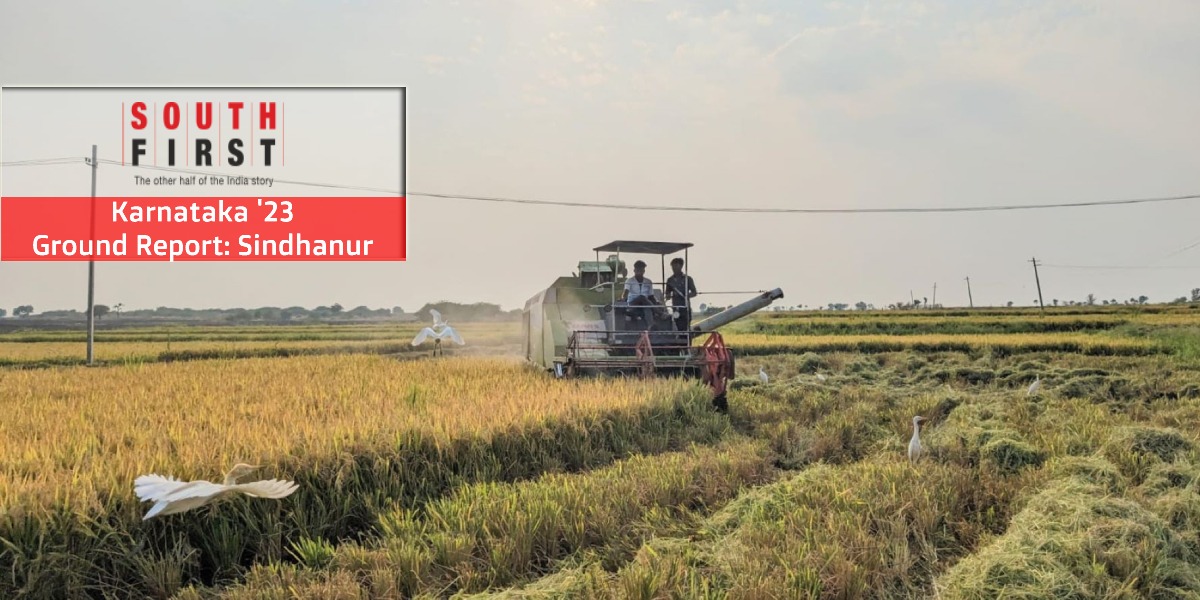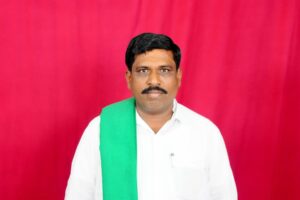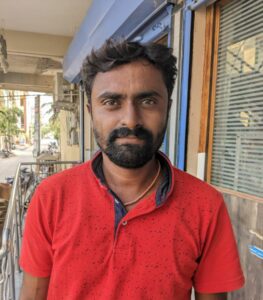Lingayats, SCs and STs, Kuruba, and Muslims are the dominant castes in Sindhanur. The Karnataka town is known for paddy cultivation.

With the Karnataka Assembly elections 2023 just days away, South First is bringing you ground reports from key constituencies. This series brings you voices from the ground, the mood of the voters, and issues that matter — as well as those that don’t — as people make up their minds on who they will elect in the upcoming Assembly elections.
Hanumesh Alluhanmesh, a 28-year-old who works at a local fuel station and resident of Sindhanur town in the Raichur district of Karnataka, has expressed anger at the state government for inflation and also pointed out that it has made life difficult for the people dwelling in both urban and rural areas, and everything in between.
“I am the sole breadwinner for my family. Even after working for 10 years, my monthly salary is a mere ₹10,000. This is insufficient for any person that resides in Sindhanur town because of the increase in rent and prices of groceries, gas cylinders and all items of daily use,” said Hanumesh.
He pointed out: “We elect the government to make the lives of the poor better, but nothing of this sort is happening. Life is getting tough with each passing day. What is the government doing to make the lives of the poor better?”
He also said: “The disappointing thing is that the poor have remained poor and the rich are getting richer. The government seems to be least bothered about poor and middle-class people. I have lost hope in the elections.”
Sindhanur town is dotted with lush green paddy fields, which are a sight to behold during the harvest season.
The town is believed to have been established during the reign of the Chalukya dynasty and was an important centre of trade during the Vijayanagara Empire.
The town is mainly known for its rich agricultural heritage and is a hub for paddy cultivation. The fertile lands of Sindhanur are perfect for growing paddy, which is a staple food in the region.
Paddy cultivation in Sindhanur is a major economic activity, and most of the farmers rely on it for their livelihood. It is not just a means of livelihood for the farmers but also a way of life.
The paddy fields in Sindhanur are irrigated using water from the Tungabhadra River, which flows nearby. Paddy is cultivated in over 2 lakh hectares in the region.
Sunflower, jowar, and maize are the other major crops grown across Sindhanur.
The constituency is home to several prominent educational institutions, including the Government First Grade Degree College. However, the city lacks institutions for professional courses.
The city also has good infrastructure for health, with a new 100-bed Government Mother and Child Hospital coming up. When it comes to serious ailments, people prefer Raichur and Ballari.
Irrigation, drinking water, lack of teachers in government schools, power supply for agricultural needs, and unemployment are the major issues in Sindhanur.
Though farmers cultivate paddy on a large scale, they face severe water shortages during the second crop in every season.
The farmers claim that most of the farmers face water shortages because the government was unwilling to supply proper water for the second crop (between January to April).

Karnataka Raitha Sangha, president Sharanappa Marli blame the government for poor water supply for the second crop for paddy cultivation. (South First)
Raichur’s Karnataka Raitha Sangha president Sharanappa Marli pointed out: “We get water for irrigation purposes from the Tungabhadra Water Reservoir, which has a storage capacity of 132 tmcft. We still don’t get sufficient water for the second crop due to severe pressure from the local industrialists on the government.”
He added: “In reality, we have sufficient water but the government gives priority to industries rather than the farmers. The excessive supply of water to industries from the reservoir is one of the main reasons that we fail to get water for the second crop.”
He also said: “There are also reports that around 32 tmcft is filled with silt. The government is planning to develop a balancing reservoir at Navali village near Gangavathi. There is also no progress in this project. Because of lack of water (for the second crop), around 20 percent of the crop is affected every year.”
He also said that the seven hours of power supply for agricultural needs is insufficient and demanded that it be increased to nine hours a day.

Chandrashekar Vanaballari blames government for shortage of teachers in government schools. (South First)
Despite poverty, parents in rural areas prefer to send their children to private schools instead of government schools across Sindhanur.
The reason is that most of the state-run schools lack basic infrastructure and teachers.
“In most of the state-run schools, there are hardly any teachers. In my village, there are over 250 students in government schools but there are only four teachers. For most of the subjects, there are not even guest teachers,” Chandrashekar Vanaballari, a farmer and resident of Olaballari, told South First.
He also pointed out: “We don’t want to risk our children’s lives by sending them to government schools. Amidst the financial difficulties, we prefer to send our children to private schools. This is a serious issue and the government has failed to respond to it even after decades.”
Despite having sufficient water, the region doesn’t have industries to address the unemployment.
People migrate to Bengaluru, Mangaluru, Goa, and other urban areas in search of jobs. Migration is also one of the issues in this segment.
“These people work as daily wage labourers in big cities. The government has set up an industrial area, but failed to bring even a small-scale industry to the region,” said Arshad Malik, a resident of Sindhanur town.
The town has many rice mills, but doesn’t address the unemployment issue as most of the labourers are from other states.
The voters claim that there is likely to be a triangular fight between the JD(S), the Congress and the BJP in Sindhanur in the 10 May Assembly polls.
In the last three Assembly elections, the JD(S) won twice, in 2008 and 2018, and the Congress won in 2013. The BJP is yet to open its account in Sindhanur.
In the 2018 Assembly polls, JD(S) incumbent MLA Venkatrao Nadagouda managed to win by a thin margin of 1,597 votes against the Congress’ Hampanagouda Badarli.
The JD(S) has given a ticket to former minister and sitting MLA Nadagouda, who belongs to the Lingayat Reddy community.
He is also the first legislator from Raichur to become a minister in the Karnataka government. He was Minister for Animal Husbandry and Fisheries in the Congress-JD(S) alliance government in 2018.
The Congress has fielded former MLA Hampanagouda Badarli, who also belongs to the Lingayat Reddy community. He is currently facing rebellion from his grandson Basangouda Badarli, who was also an aspirant. He is likely to contest as an independent candidate.
The BJP has given a ticket to K Kariyappa, who hails from the Kuruba community. He contested under Badavara Shramikara Raitara Congress Party in 2013 and managed to settle for second place by overtaking then MLA Venkatarao Nadagouda.
Meanwhile, the Kalyana Rajya Pragathi Paksha has given a ticket to businessman Mallikarjun Nekkanti, who is making his debut in electoral politics.
Political commentator Mustafa told South First: “There is a close fight between all the three parties. The incumbent MLA Nadagouda has done development in his tenure but there is anger among his party workers due to various reasons.”
“There are allegations that he used to demand a 5 percent commission from the contractors — mostly JD(S) workers — in every project. Upset over this, many JD(S) party workers left the party and joined the Congress. This might affect him in the election,” pointed out Mustafa.
He further said: “In the Congress, Hampanagouda is facing rebellion from his grandson Basanagouda. He is planning to contest as an independent candidate. If he contests, the fight will be between the BJP and the JD(S).”
He added: “The Congress and the JD(S) have preferred Lingayats and the BJP has given a ticket to the Kuruba community. It has fielded Kariyappa. He fought only in the 2013 Assembly polls. He has sympathy in this election. It is important to note that the BJP is yet to win in Sindhanur.”
In the Assembly seat, Lingayats, Kurubas, Muslims and SCs and STs are the dominant castes.
Lingayats have over 60,000 votes, Kurubas have around 30,000 votes, Muslims have 35,000 votes, and SCs and STs have 22,000 and 16,000, respectively.
Marvadi, Brahmins, are the other castes that have over 5,000 votes each in the segment.
“People here won’t consider party symbols. Instead, they prefer voting based on the caste of the candidate. Caste and money power are the two factors that voters look at here,” said Mustafa.
He also said that the people hardly consider the development and performance of the incumbent government while exercising their franchise.
There are 2.36 lakh voters in the segment. The women voters outnumber the men by 6,000.

Jul 26, 2024

Jul 26, 2024

Jul 26, 2024

Jul 26, 2024

Jul 26, 2024

Jul 26, 2024